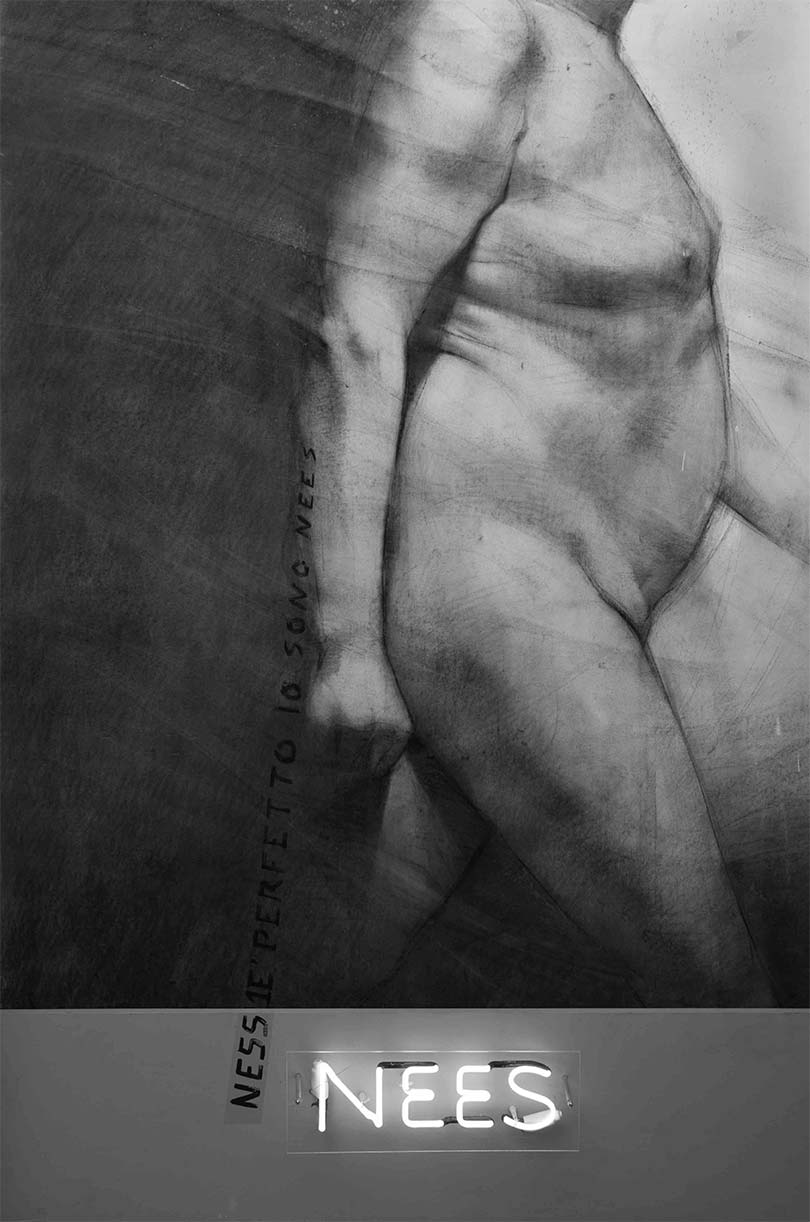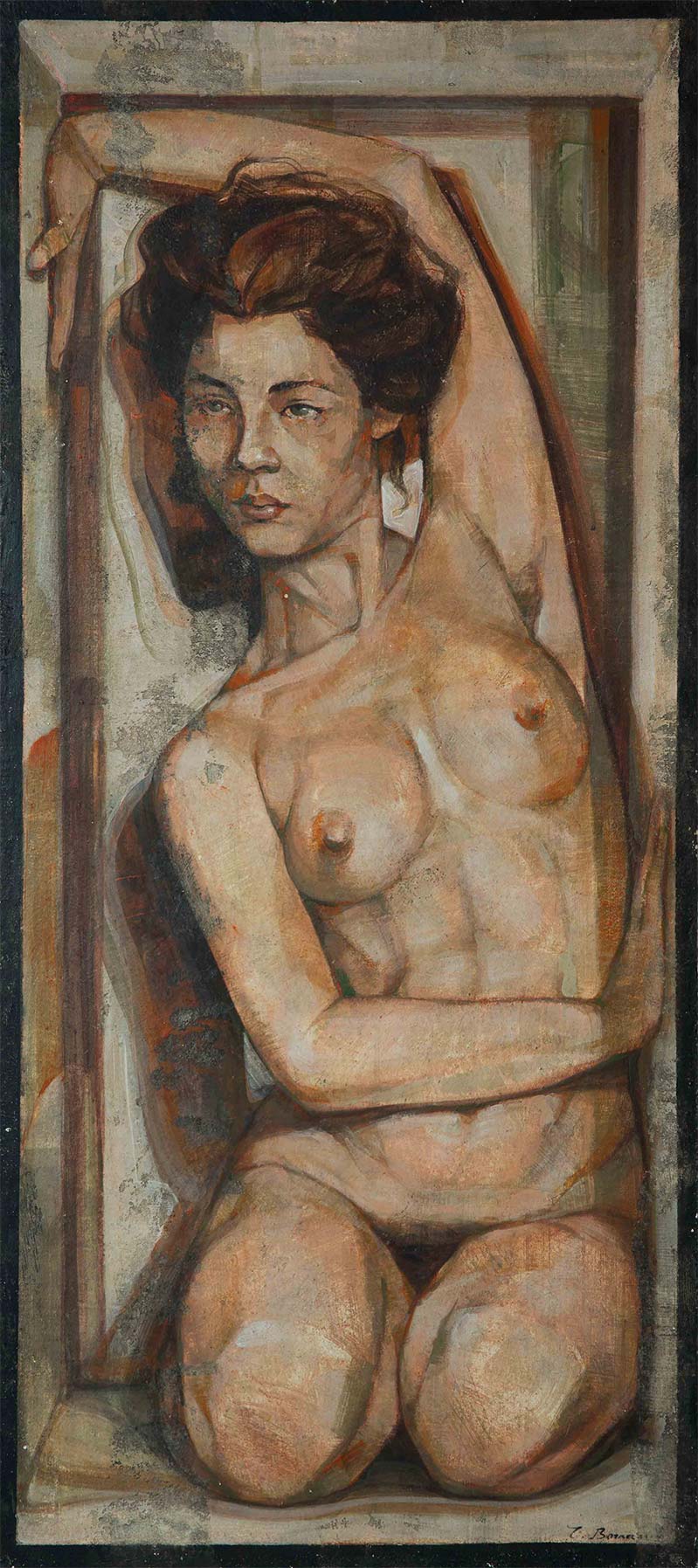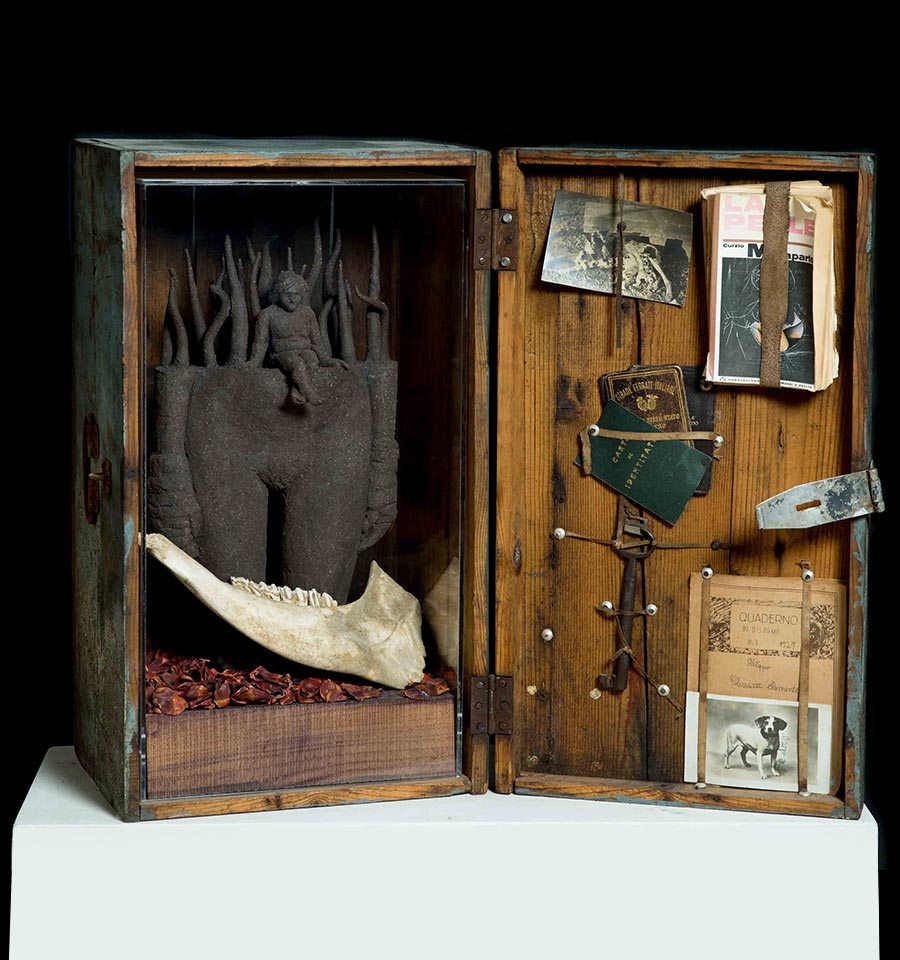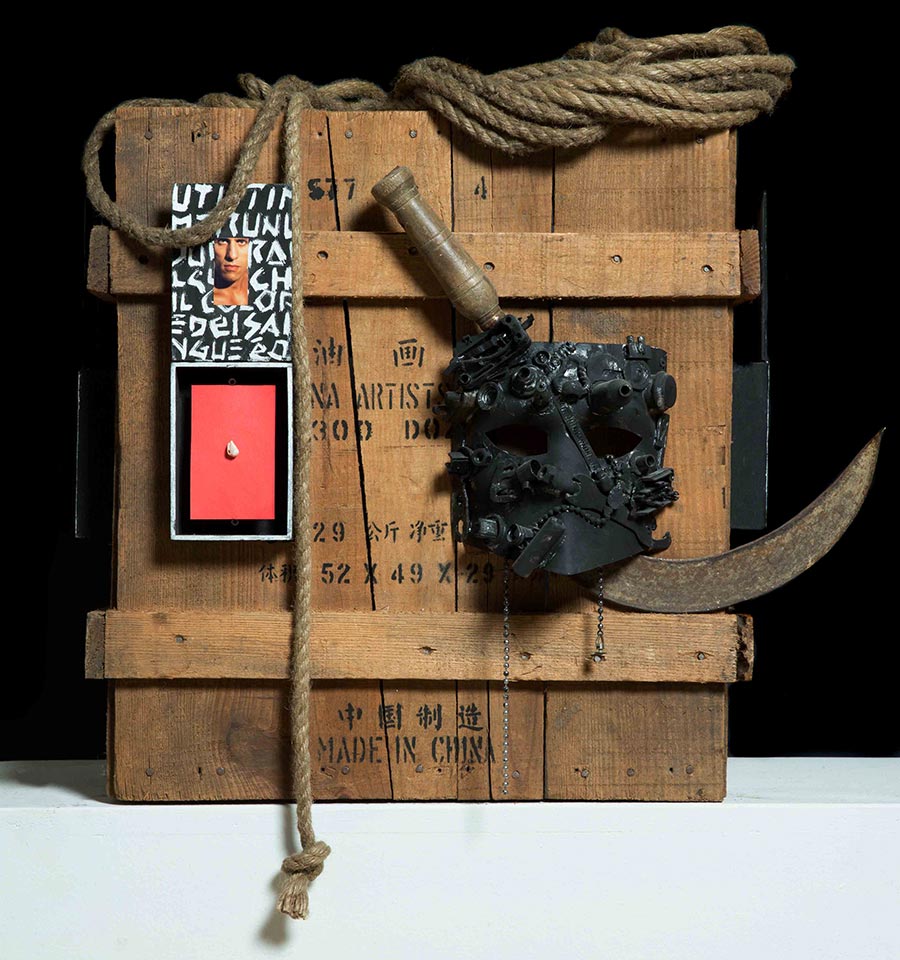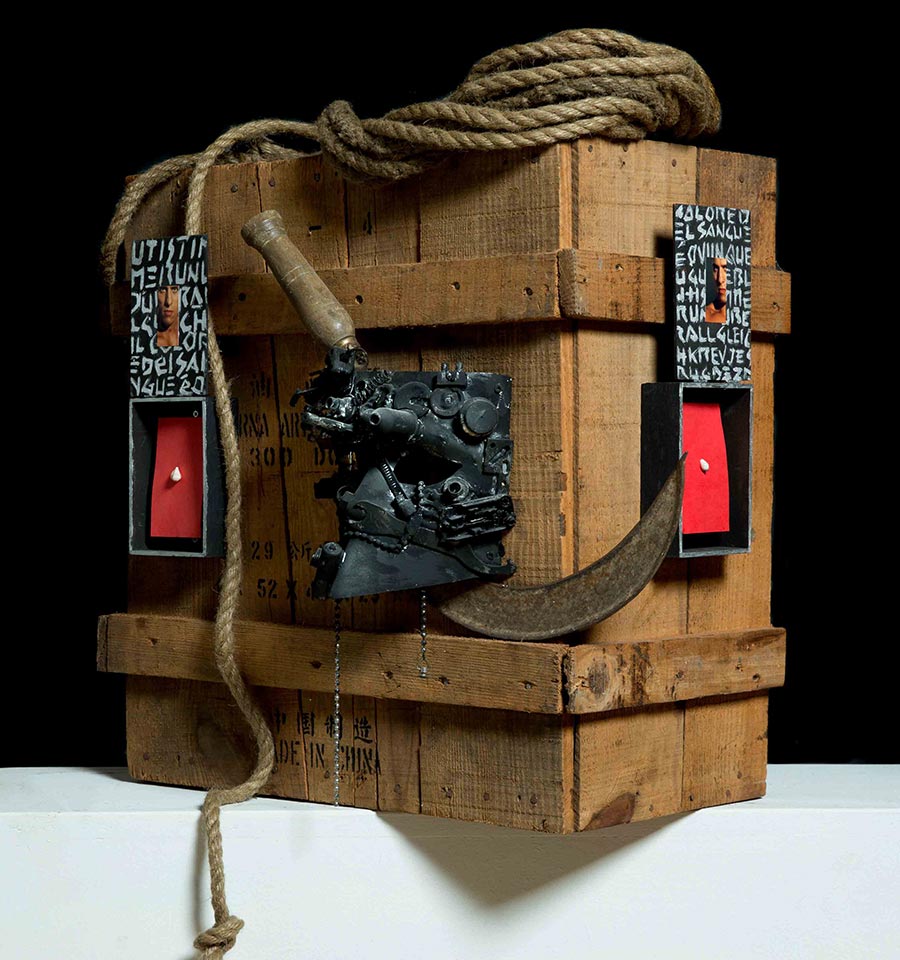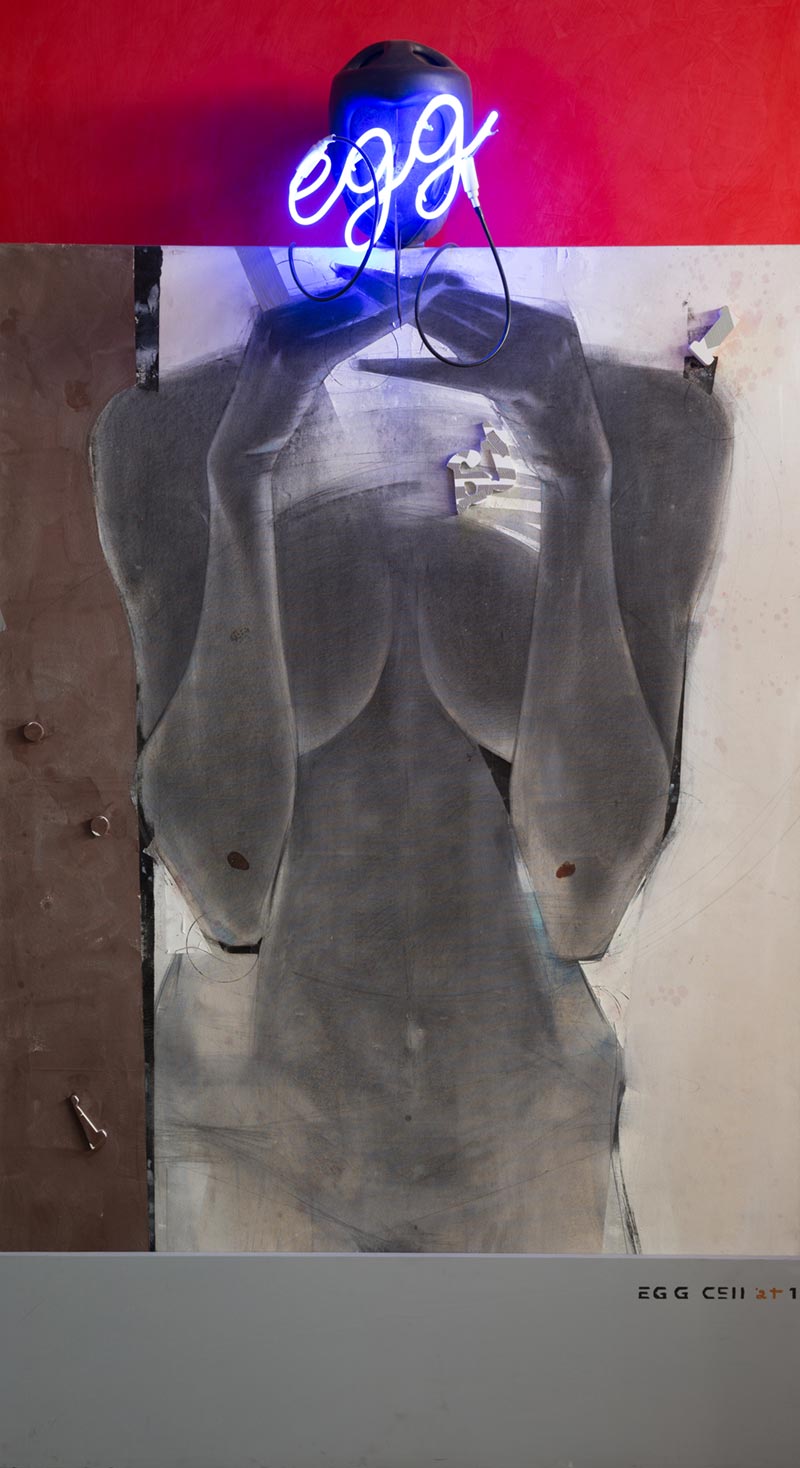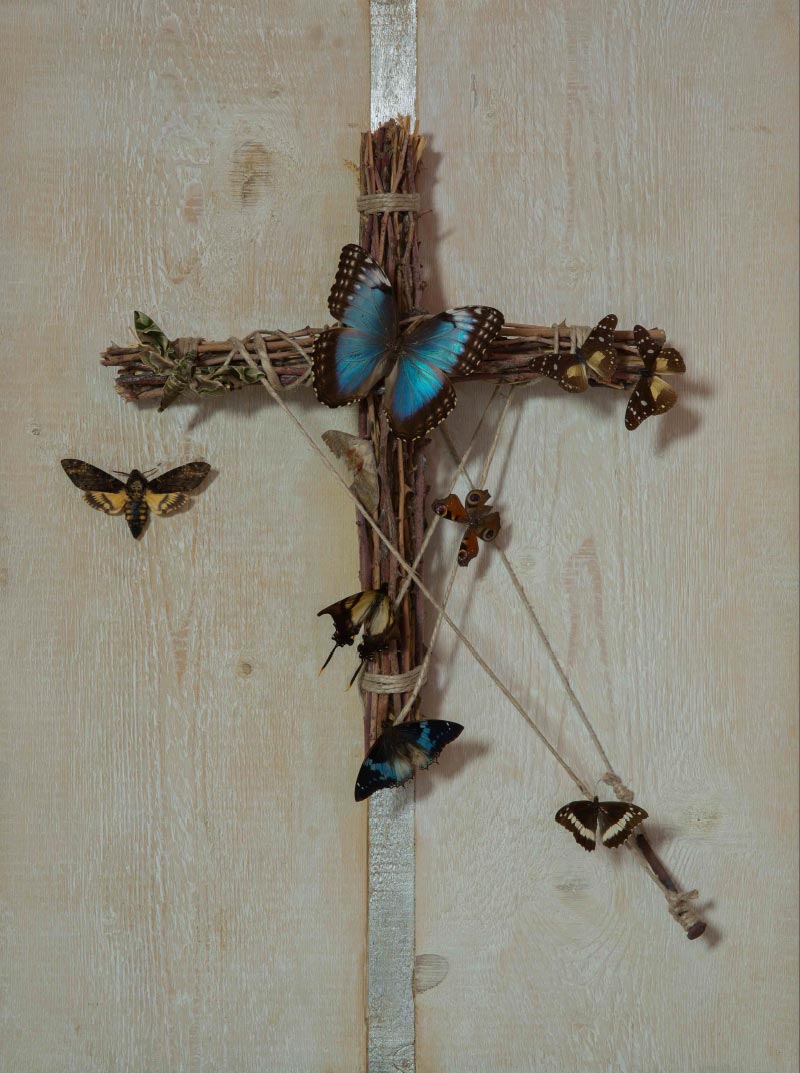The research is rooted in the early 1990s, in existential and artistic paths that develop within formal languages that investigate reality and explore its multiple expressive capabilities and possible associative solutions with materials and things. The aim is to draw attention to the tangible action of art and the crucial role of the artist who is capable of shaping the material without intermediaries; this operation puts all its hope into the creative capabilities in order to produce effective quality through the reciprocal relationship between subject and object: “Quality is the point at which subject and object meet, it is the event that sees the subject become aware of the object”, a relationship that has had increasingly greater difficulties in painting and sculpture as tangible tools of expression contaminated by the virtual languages of contemporaneity.
These languages have produced a dematerialization of art that has taken over the exhibition and market circuits. This research looks into materials and their communication, into processes to develop the image in relation to the content and materials that condition their superficial and deeper aspects, destabilizing the corpus of the work to the limit of its identification as an object; compositions that are born from the encounter between things and objects, and objects often obsolete but saturated with memories that mould their shape today to become something else. It could be defined as an action that starts from the skin of the image to then penetrate its vital organs until it modifies its aesthetic and functional nature, generating something unclassifiable and anomalous that, by provoking a critical point in the vision, enhances the vitality of the work by establishing a new relationship in communication.
- NEES IMPERFECT mix media on canvas with fluorescent neon tube, cm. 135 x 200, 2014
- THE BOX lime tempera on wood cm. 55 x 110, 1995.
While on the one hand, the image has been explored to the limit of its aesthetic and communicative qualities, on the other, it has regenerated itself with surprising mutations.
It is precisely in such stages of mutation and temporal suspension that the artistic research is introduced, producing visual and plastic information that takes on ever new identities in a process of potentially infinite suggestions: old / new, pre / post no longer have any meaning and become conventions of an inapplicable language for the evaluation of an extremely unstable and unquantifiable entity such as the image, reflecting a living, ever-transforming reality that still remains an unexplorable mystery. Shimshon, little sun, composed of a sculpture, bones, and various elements in an old trunk, is a work where the objects of which it is composed are “pieces of time” used as chains of meanings for a single end; the story of an existential tragedy that, starting with a biblical tale (the Samson legend and the donkey’s jaw), propagates to our time offering the chance to take a journey while remaining perfectly still on the spot.
- SHIMSHON / PICCOLO SOLE trunk with sculpture in fireproof, clay, donkey jawbone, various documents and , cm. 60x80x30, 2014.
- DEUS EX MACHINA installation on wood with rope, sickle, mask, shells in boxes, cm. 60x60x30, 2014.
- DEUS EX MACHINA installation on wood with rope, sickle, mask, shells in boxes, cm. 60x60x30, 2014.
- THE CLONE mix media on canvas, plastic pieces/slices, boxer helmet, helm, fluorescent neon tube, cm.135×230, 2013.
In the painting The clone, the design with positive – negative effects is predominant and the use of alphanumeric codes in plastic almost suggests an ambiguity that violates its extremely classic system. While making this work, the painting was subjected to positive / negative photographic tests revealing curious aspects of virtual cloning; these aspects showed the way to the idea of detecting the form and digging it out from its invisible interior, allowing it to stratify on the exterior to consolidate its definitive Entity. The painting is overlaid by a boxer’s helmet and a rudder (disassembled from an old Arno sand-digger or renaiolo’s boat) with fluorescent neon tubes bearing the luminous inscription egg; this has been recovered from a disused sales sign. Randomness has been transformed into a non-textual desire for identity (egg / cell – egg), but also visual and symbolic identity (cellular cloning / alteration). The sum of every circumstance has linked the work, composed this way, to a famous movie quotation which may be considered as a pure increment in meaning.
“I have all the characteristics of a human being: blood, flesh, skin, hair; but not a single, clear, identifiable emotion, except for greed and disgust”.
(from the movie: American Psycho
- LEX charcoal on wood, old brazier, spray, cm. 65×60, 2013.
In an old brazier I created Lex. I was impressed by its emptiness: it was not just any void but an unclassifiable void; you looked inside and found the outside as if the void were not empty and the massive oak frame a border of nothing. At one time that emptiness was always full, even when the embers turned to carbon, then time emptied it of all value by making it “nothing” and nothing is unacceptable. I thought perhaps that it needed the black material of a long time ago to regain its lost honour and so I thought I would design a body with a charcoal stylus. It reminded me of a childhood fairy tale where a poor carpenter made a toddling boy from a piece of wood: who knows if that old brazier also warmed some meal for Collodi when he stayed in the Ginori palace on Via de’ Rondinelli, or burned the feet of the famous wooden puppet. The story of honour and coal reminded me of the history of Italy, violated for years by foreign invaders, poverty and then the much desired liberty that culminated with the Constitution and the tricolour flag. By establishing a kind of imprinting with the object, I made a rather unusual flag – brazier. A series of associative processes among concepts, materials and literary quotations allowed me to visualize the subject; a feminine bust with a text in monolithic characters. The support was plastered and sanded in degrees to obtain a retro-whitening effect where the chiaroscuro was layered in various steps, worked in stages with bristle brush strokes and dampened with sprayed water; once it was dry, it was somewhat disintegrated but more intense and more solidly anchored to the wood vein. Some areas in the light were brought out in white, in a vaguely classic style, almost achieving the effect of epidermal sweat.
“The Law, in Italy, it’s like the honor of whores“
( C. Malaparte )
The objective of my research is not resorting to the new at all costs, which often produces only the virtuosities of what has already been done, but to recover the professional and spiritual values of art which are revealed through direct creation, without any of the passages changing hands or serial assumptions offering different points of view, certainly authentic and unique.
My sources of inspiration can be found in some twentieth-century artists or trends, each just an isolated reference to some specific features alone: “Vision is not a mechanical recording of elements, but the capturing of meaningful structures. The material of experience is not an amorphous agglomeration of stimuli […] The objective element in every experience instead justifies attempts to distinguish between an adequate and an inadequate conception of reality; beyond this, one can expect that every proper conception involves a common nucleus of truth, which could make the art of all times and all places meaningful for all men”.
Obviously, objective criteria are important. It involves training experiences and technical knowledge, underlying the consequent and indispensable subjective interpretations that together constitute what Gillo Dorfles calls “the most important basis for any authentic artwork”. All of this, specularly, highlights the contrast with a wild baseless proliferation of contemporary languages that dominates the current world scene, creating misunderstandings in communication and altering the intrinsic values of art.
- ANIMA, organic composition on wood of brambles, ropes, batterflies, iron nail, cm. 57×75, 2005.
I have lived my life between art and combat sports, transgression and discipline, creativity, and a cast-iron respect for the rules needed to survive aspects of life that often involve defeat and unforeseen expectations, to the extent that someone jokingly nicknamed me “martial artist.” The fundamental components of my artistic work have been drawing and my tie to the land, its limpid light that creates such strong chiaroscuros, the architectural scores of Florentine buildings defined by perfectly harmonious verticals and horizontals, the undulating rhythm of the hills and everything that allowed the Renaissance to burgeon; in short, everything that has surrounded me since I was born has been nourishment for my eyes, mind and soul and I have cherished it like the most valuable heritage, merging it with my personal experience and technical skills in the field of art.The result is a hybrid style that puts great stock in the value of some materials, in the emotional vibrations aroused, each with its hidden meaning. It was a story told in images about the history of the man; every single work was created specifically to evoke a concept, a story, a precise entity that preserves and amplifies its evocative power in the material with which it is or was made. For this reason, its creation was conceived in a way that is out of the ordinary and every material chosen underwent processes of spiritual transformation and sublimation – basic foundations of humanistic thinking – that made it unique in its evocative potential.
THE RELATIONSHIP WITH FLORENCE
Between History
and Contemporaneity
Florence has been a constant presence throughout my life, I could say “a mother” I’ve never managed to break away from. Her evocative power and force have influenced my life as a man and an artist. Charles de Tolnay writes, on the life of Michelangelo: “The incomparable topographical location of Florence is characterized by the fact that the city seems to be at the centre of several hilly and mountainous circles that surround it, almost embracing it. For the artist, this position must undoubtedly contribute to the development of the sense of symmetry and hidden order in the complex structures of nature. Cubic geometry, inherent in the shape of that landscape with the appearance of a natural garden, with its hillsides of stairs and terraces, and its rows of vines, olive trees, cypresses and pines, certainly favoured Buonarroti’s development of the sense of pure and regular forms. The clear atmosphere, the clarity of the contours of things, the striking, almost geometric contrast, of light and shadow on them, had to be a decisive factor in the development of the master’s sculptural sense”.
Florence is petrified flesh in the statues and façades of its palaces that observe you with their eyes framed by mullioned windows and tympanums, bronze flesh in its doors, crosses, shields, animals and characters who have inhabited it over the centuries. It is the perennial strength in the rocks of its forts, the font of eternal youth in the water flowing in its fountains, the vital energy in its gardens, the maternal womb of its cloisters and in the majesty of the great Cupola of Santa Maria del Fiore.
I define Florence as a “genetic need”, the primary root that feeds my vital human life tree to put into action those processes to transform material, processes that art has always called for to establish that mysterious relationship of man’s ancient communication.
I have found, in the skin of my city, the primordial strength of the material. I have felt in the heart of my city the powerful roar of her lions and the sharp edge of her blades. And this is how it was for the intrepid blood of her heroes, which bloodied the lily and the cross in the shields with red. And this is how it was for the glittering gold, not the gold of the florin but the soul of the Renaissance, which has flooded the whole world with precious knowledge. For all of this and much more, I have decided never to deny “my mother” for different cultures, despite the fact that the inclusion of diversity is indispensable renewing the life force and guaranteeing that the tree survives. Florence forged me, like all her swords, allowing me to face new and exciting challenges today, not to win them but to understand their risks and my limitations.


